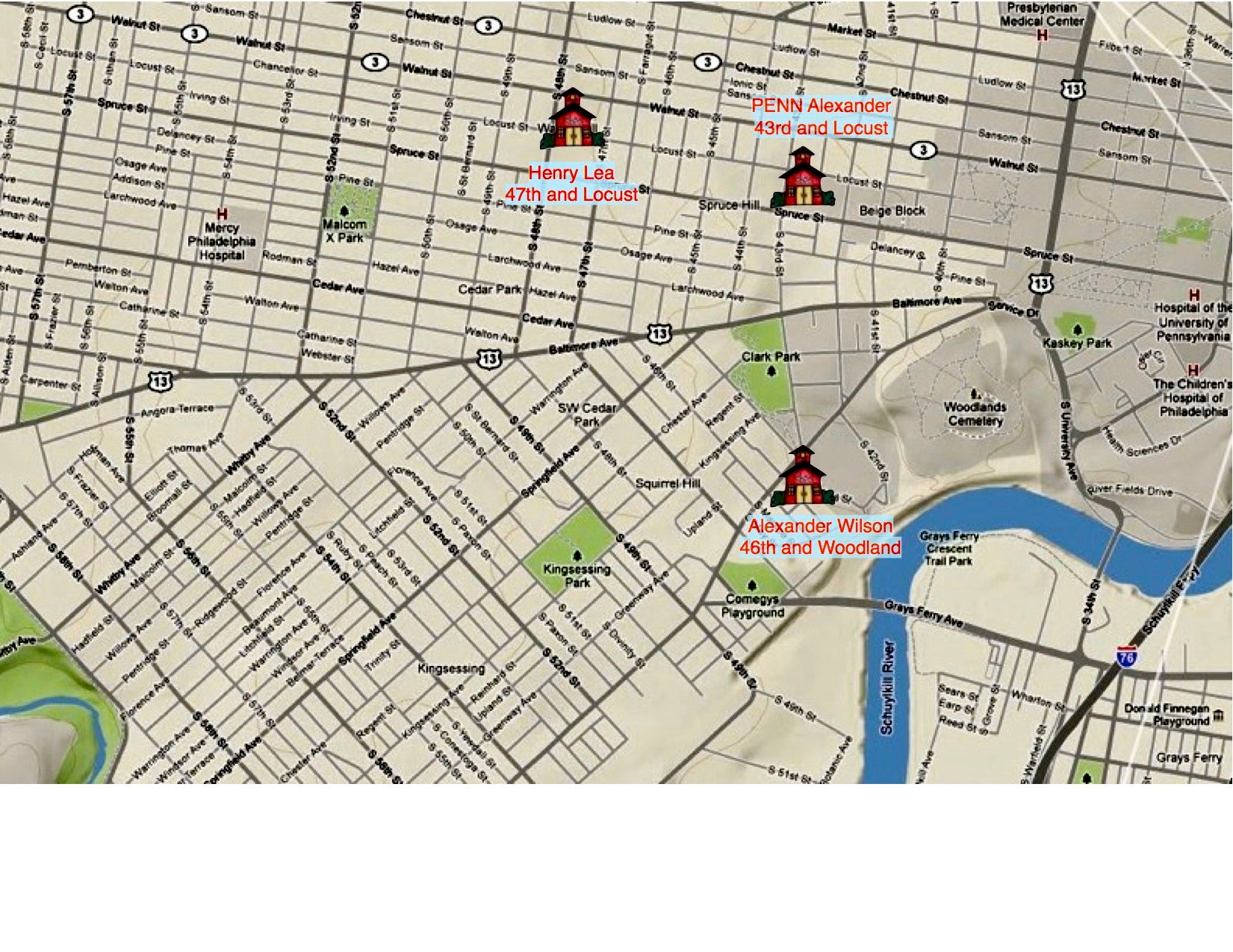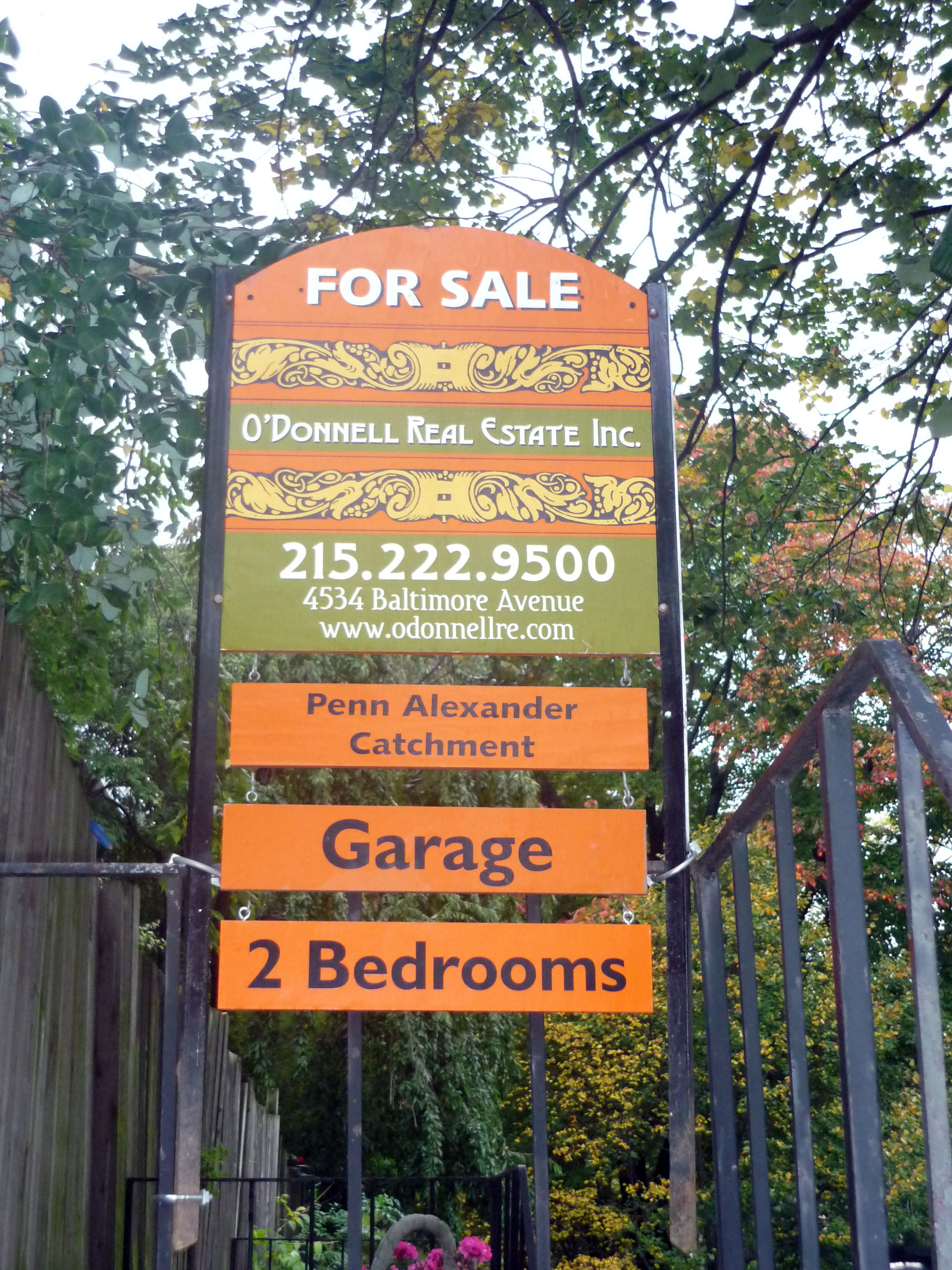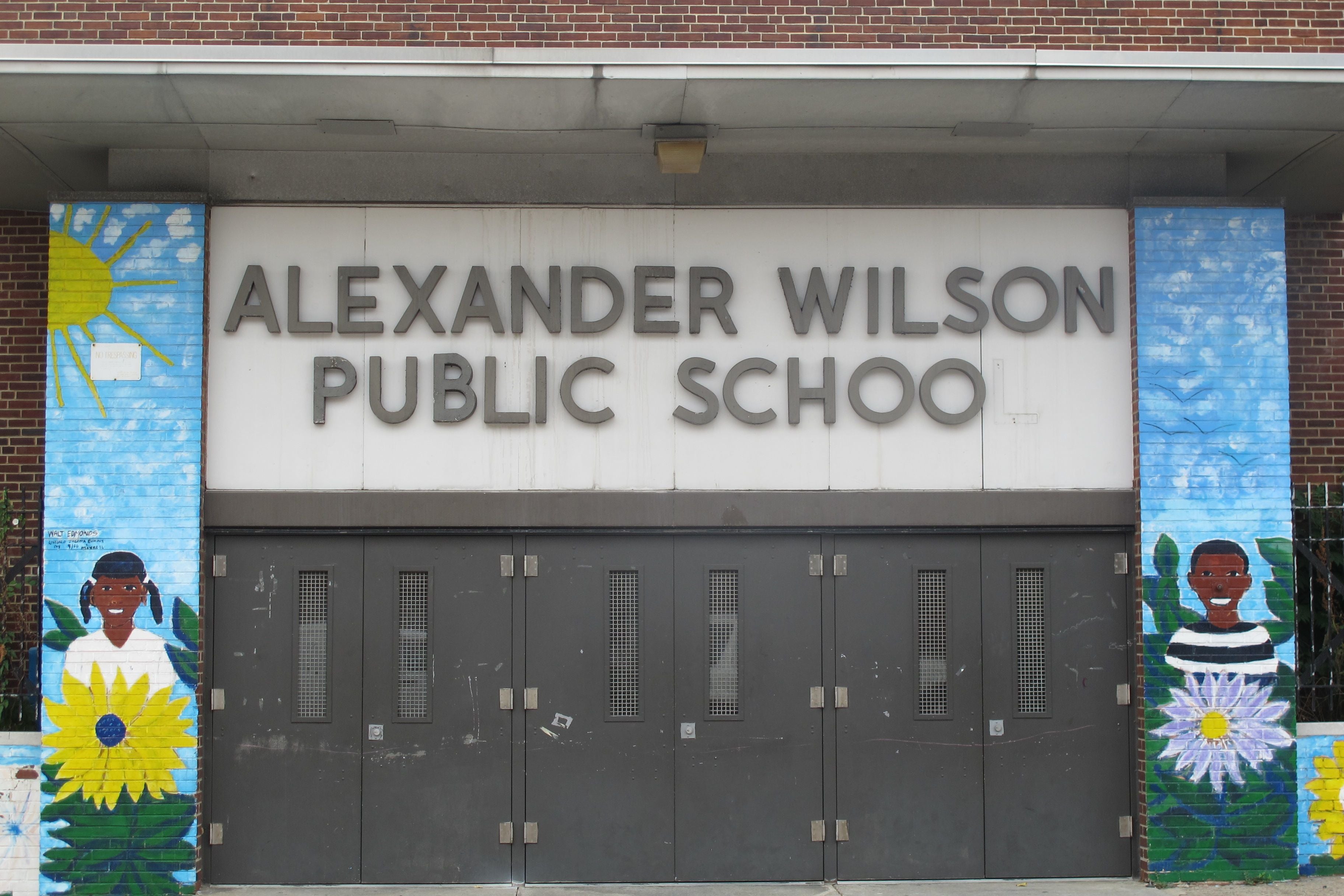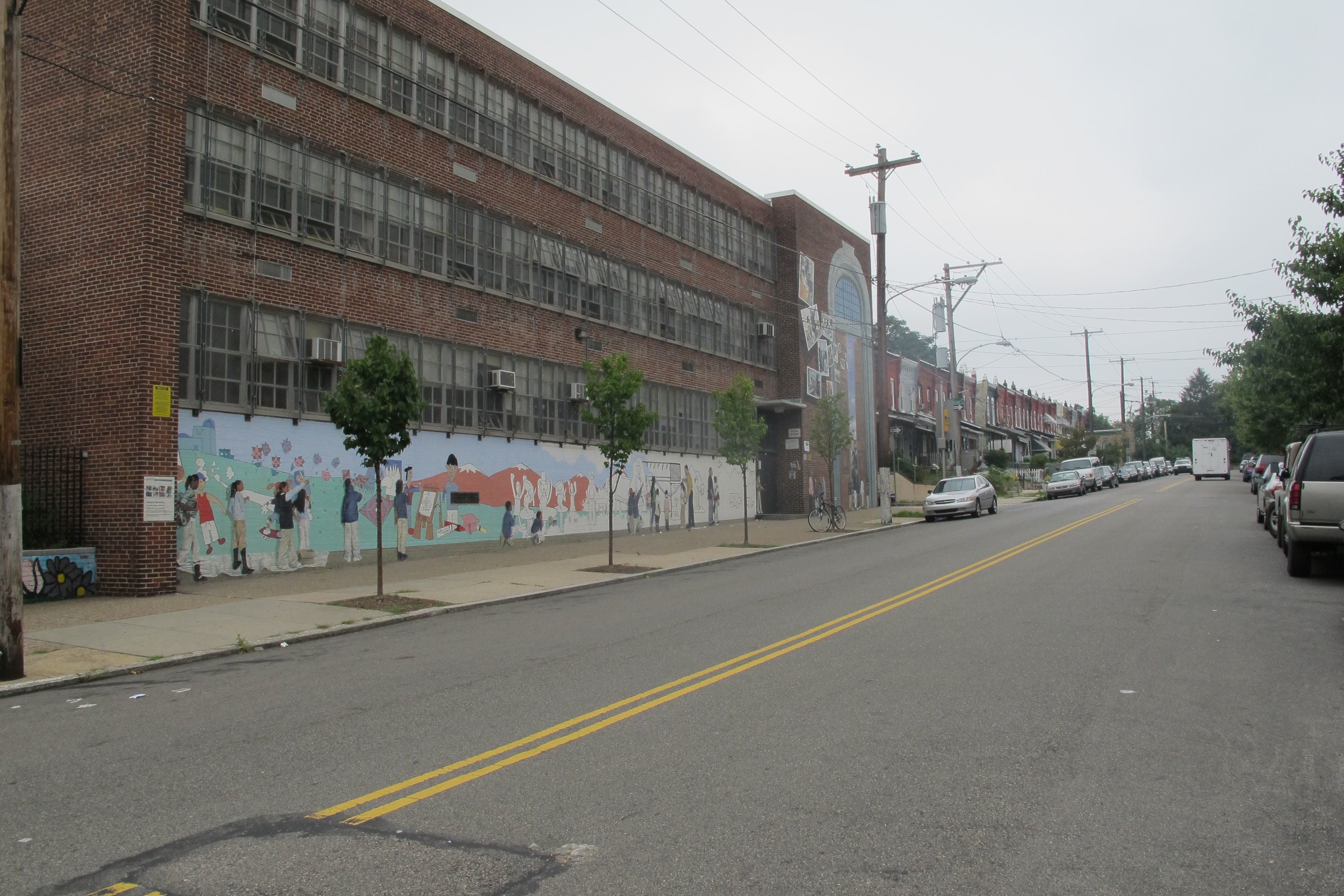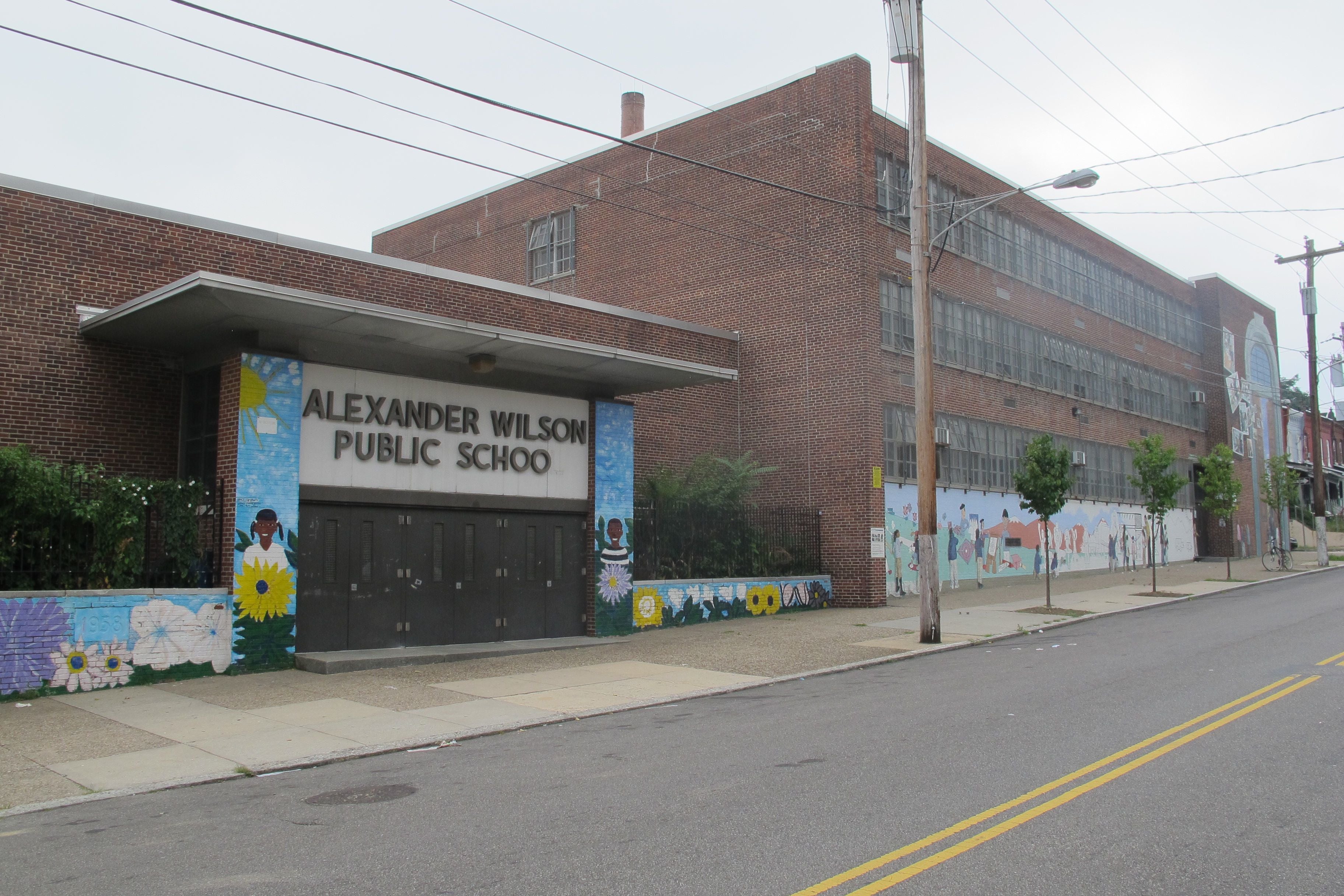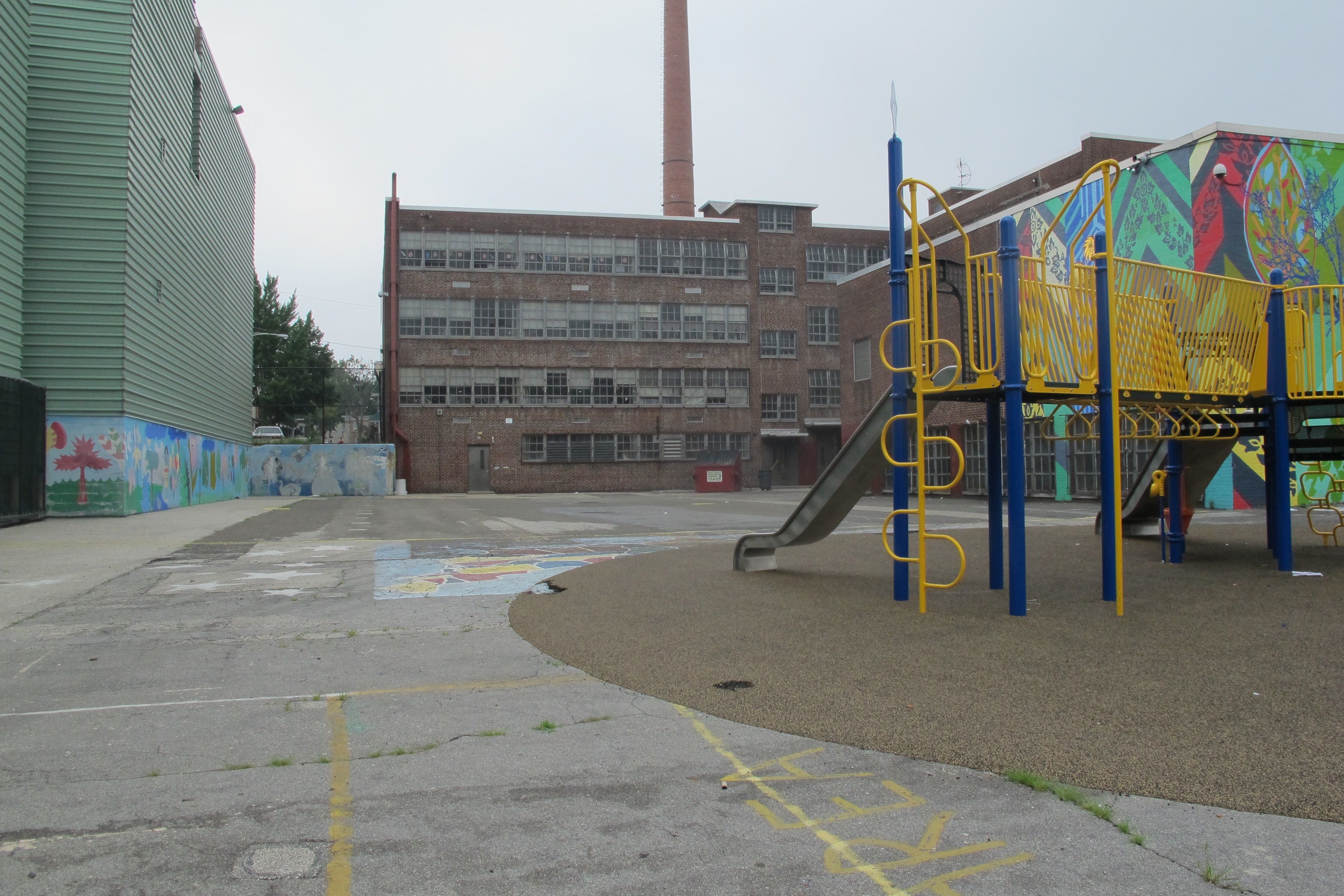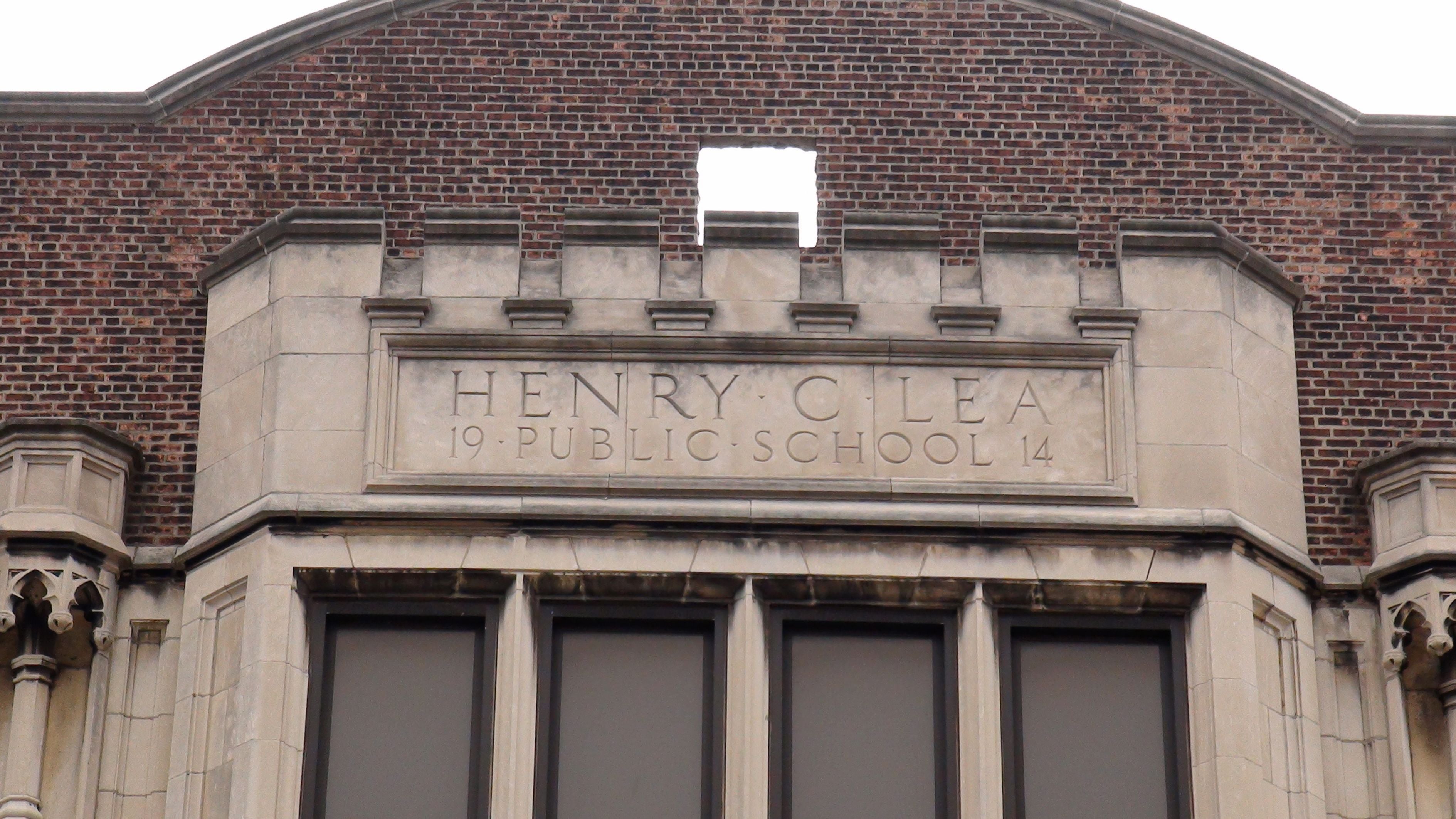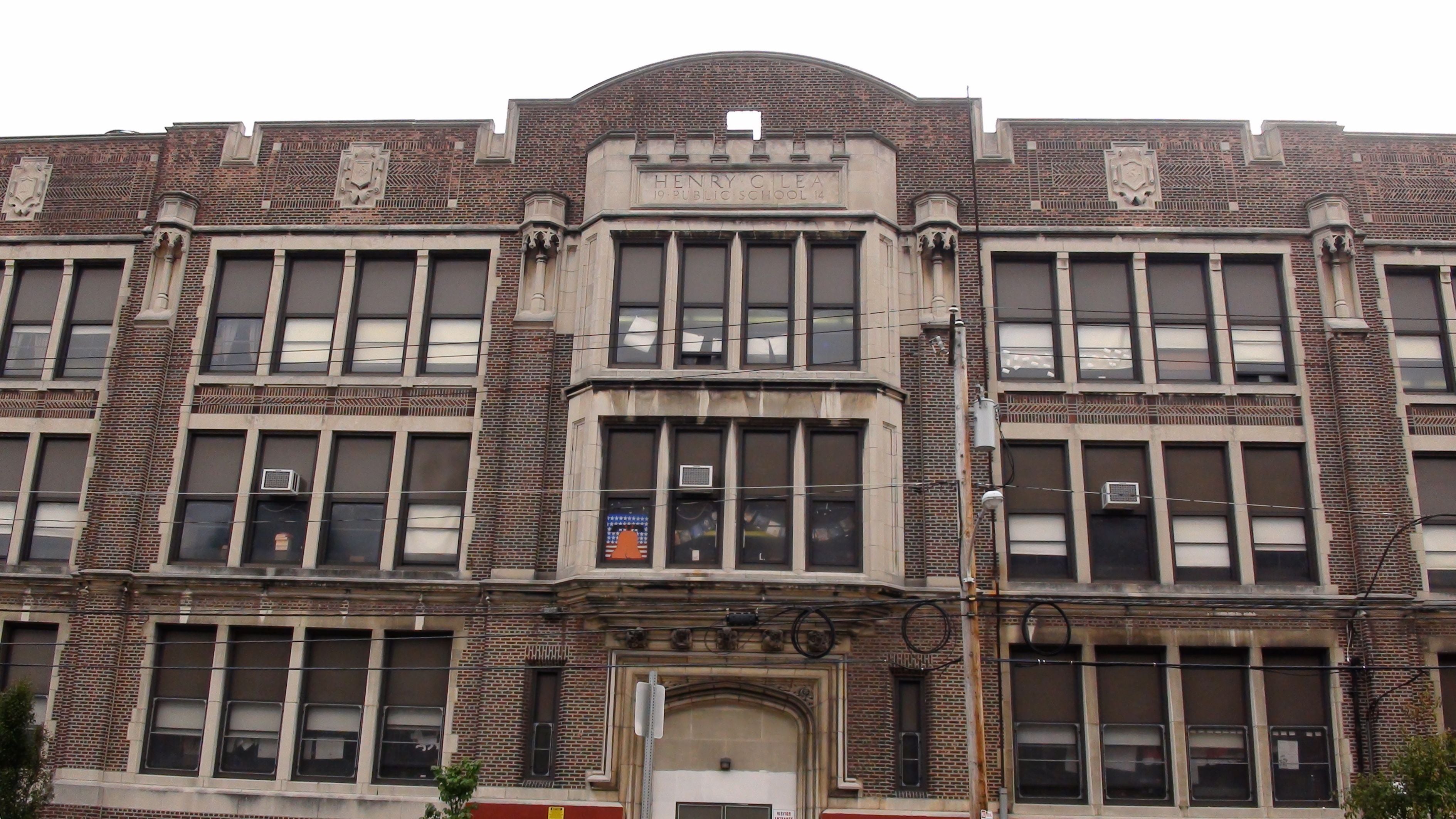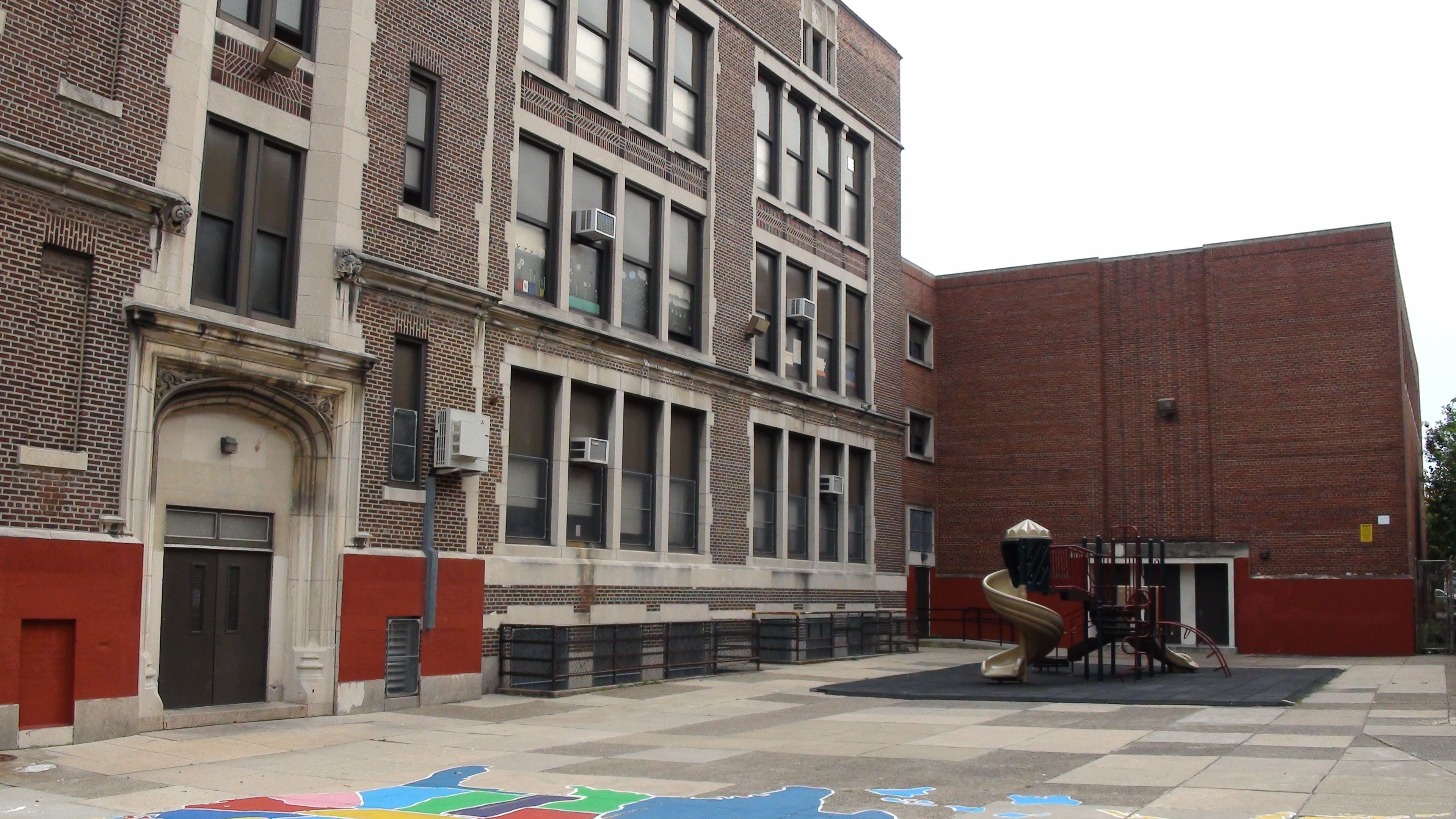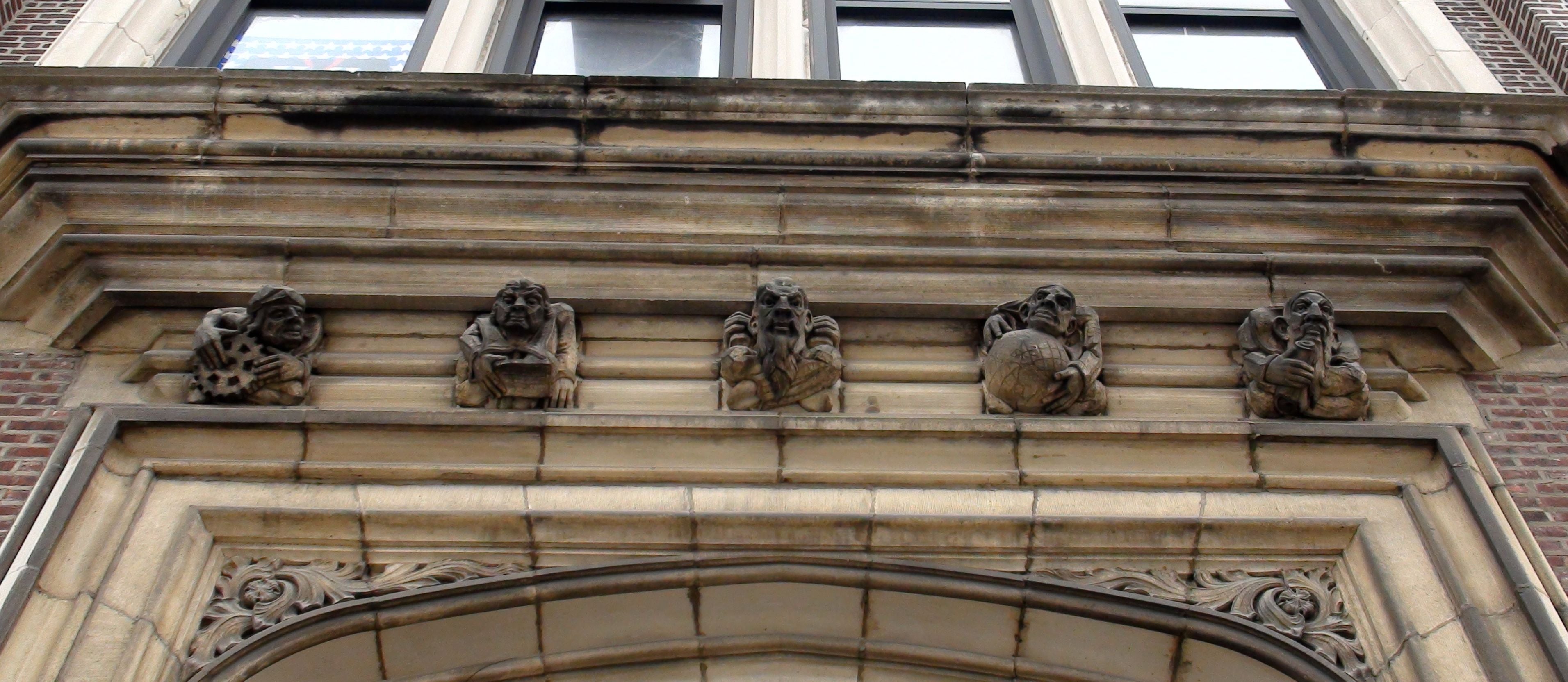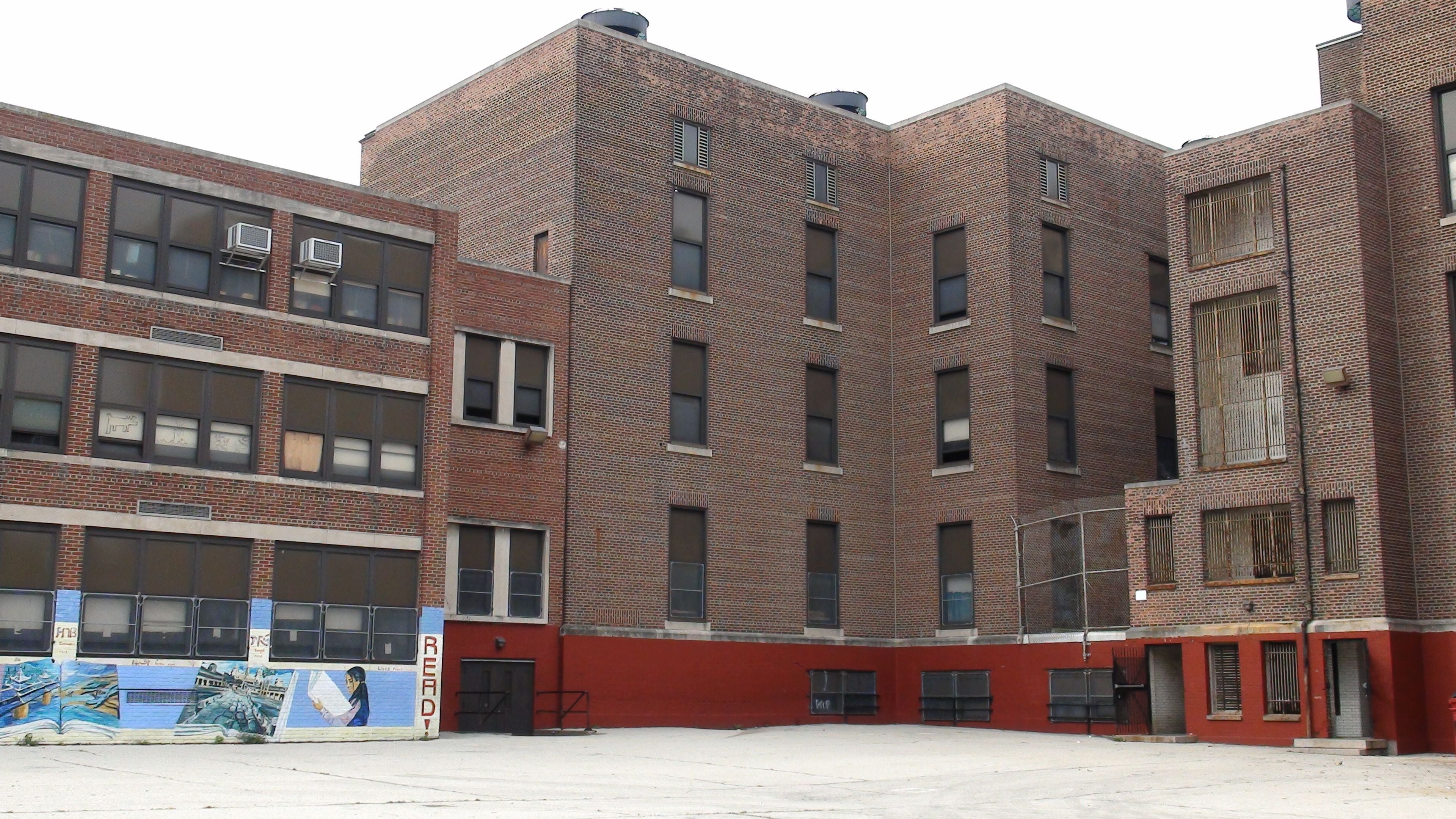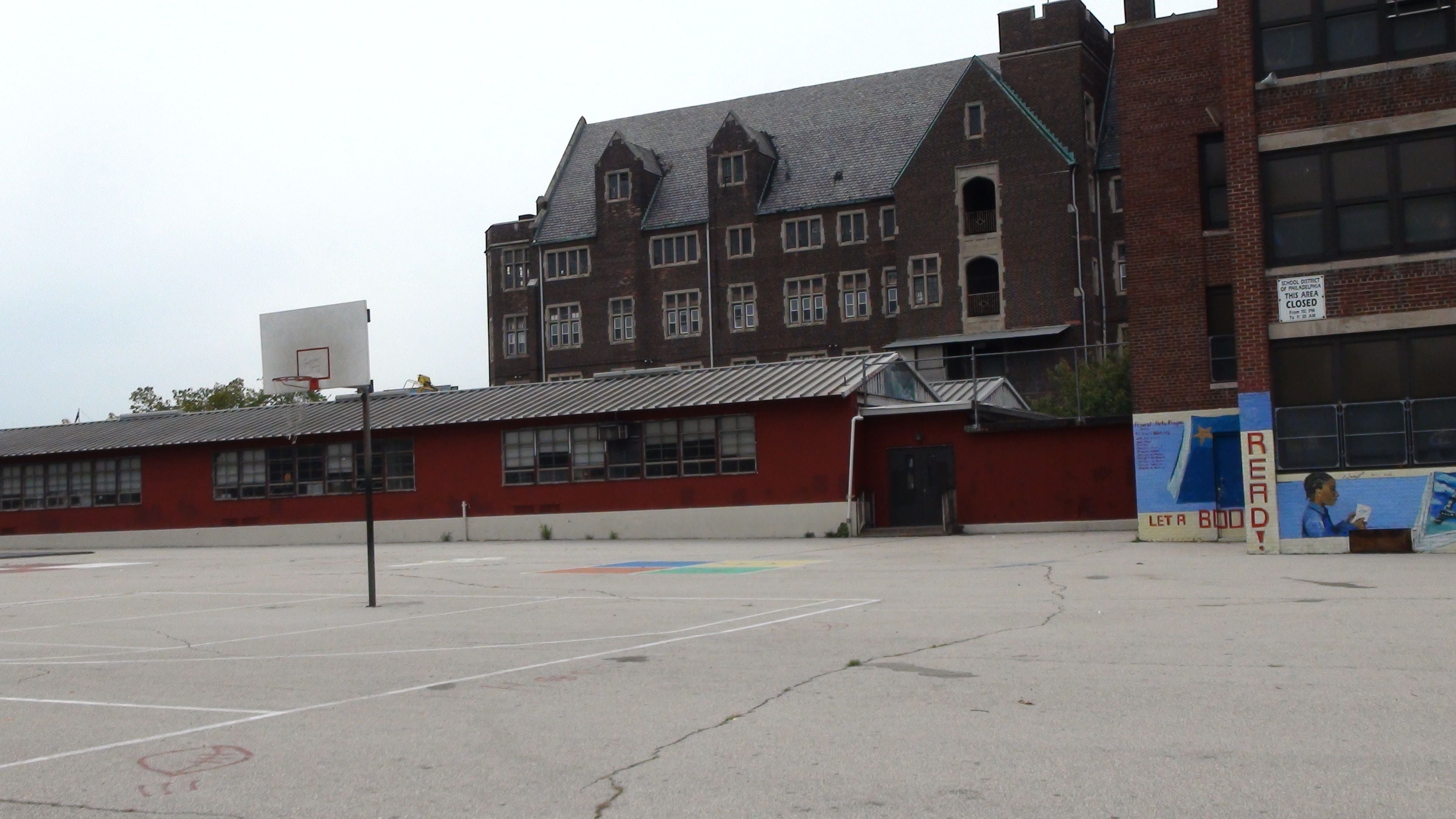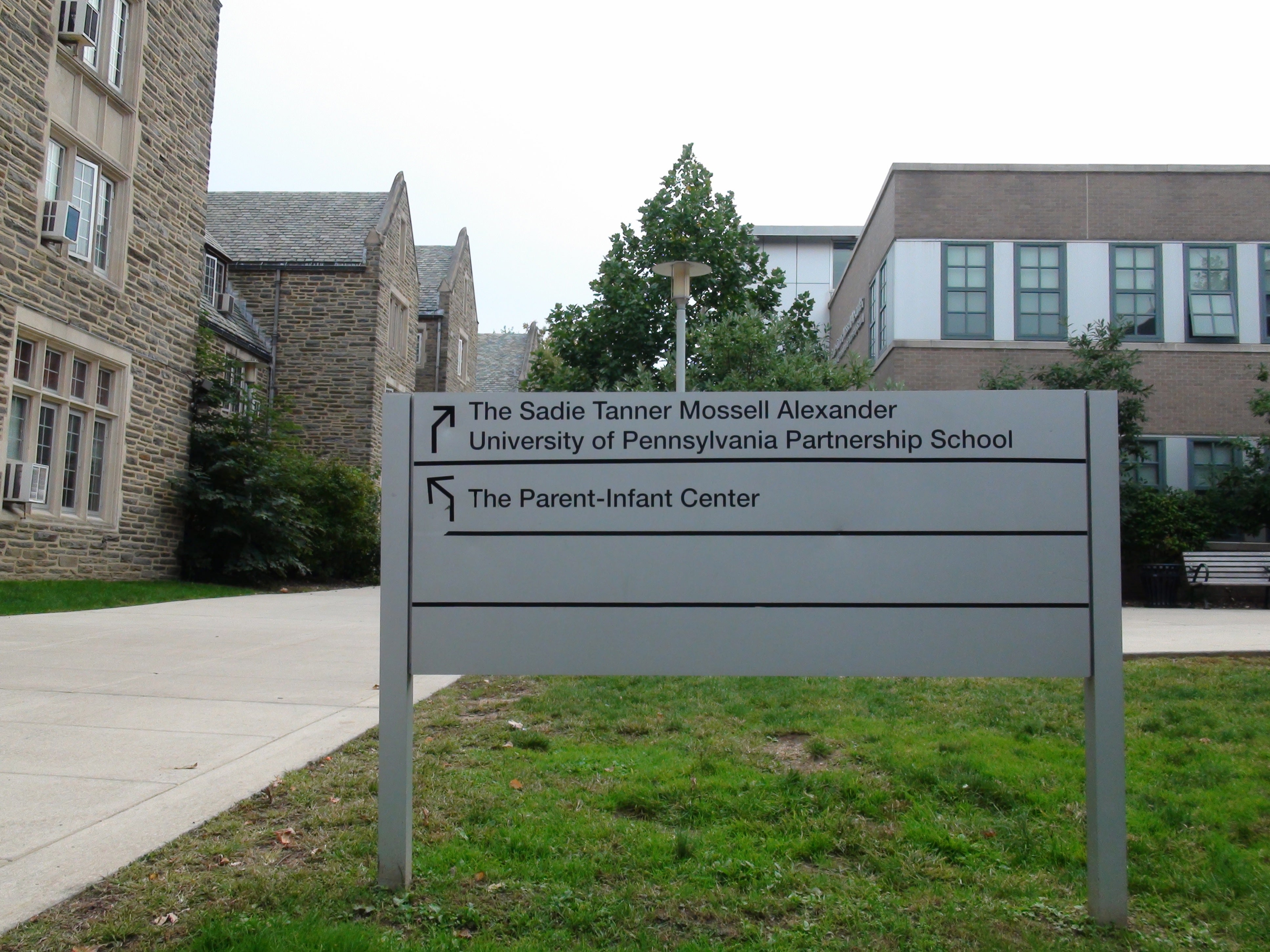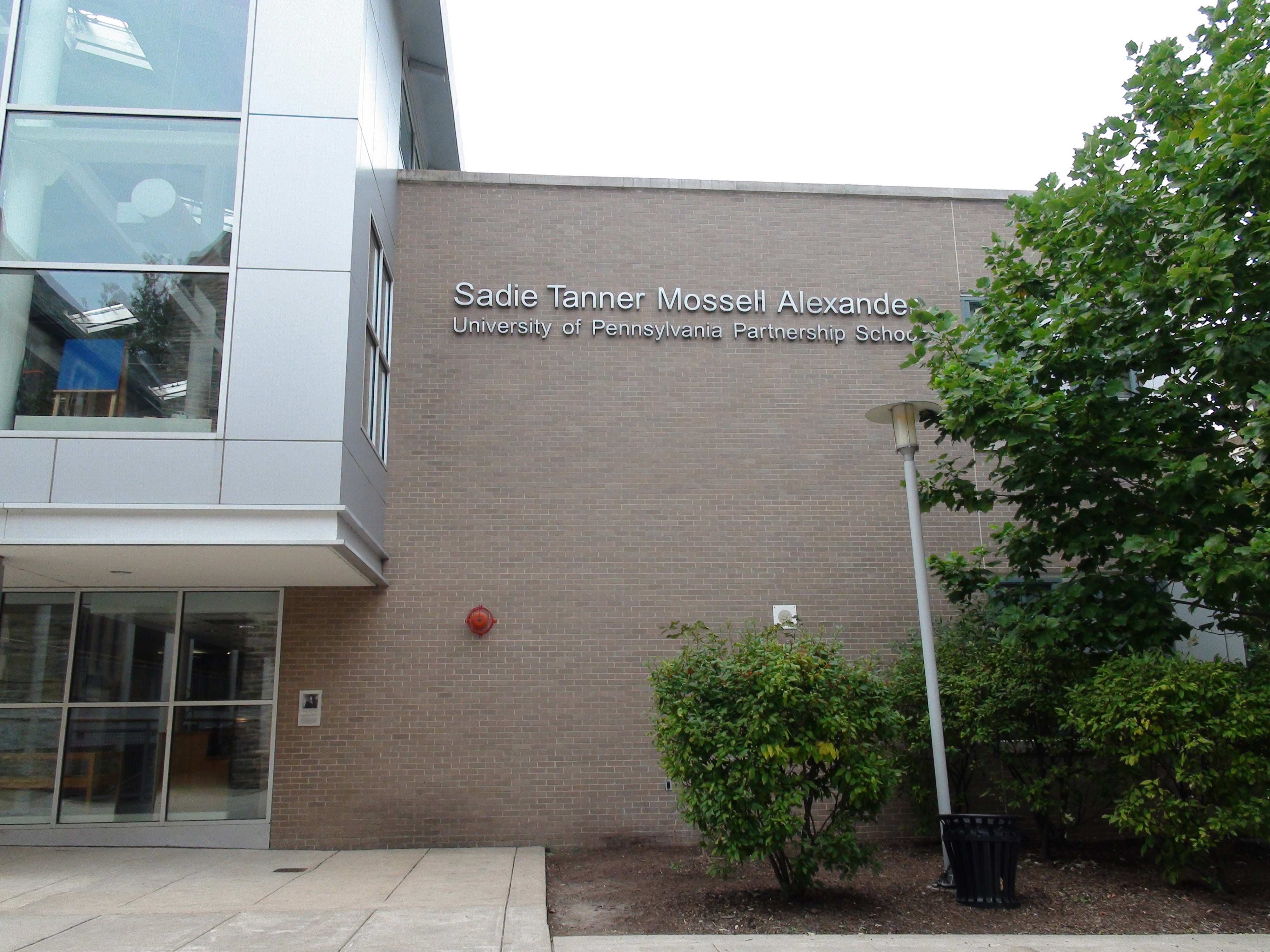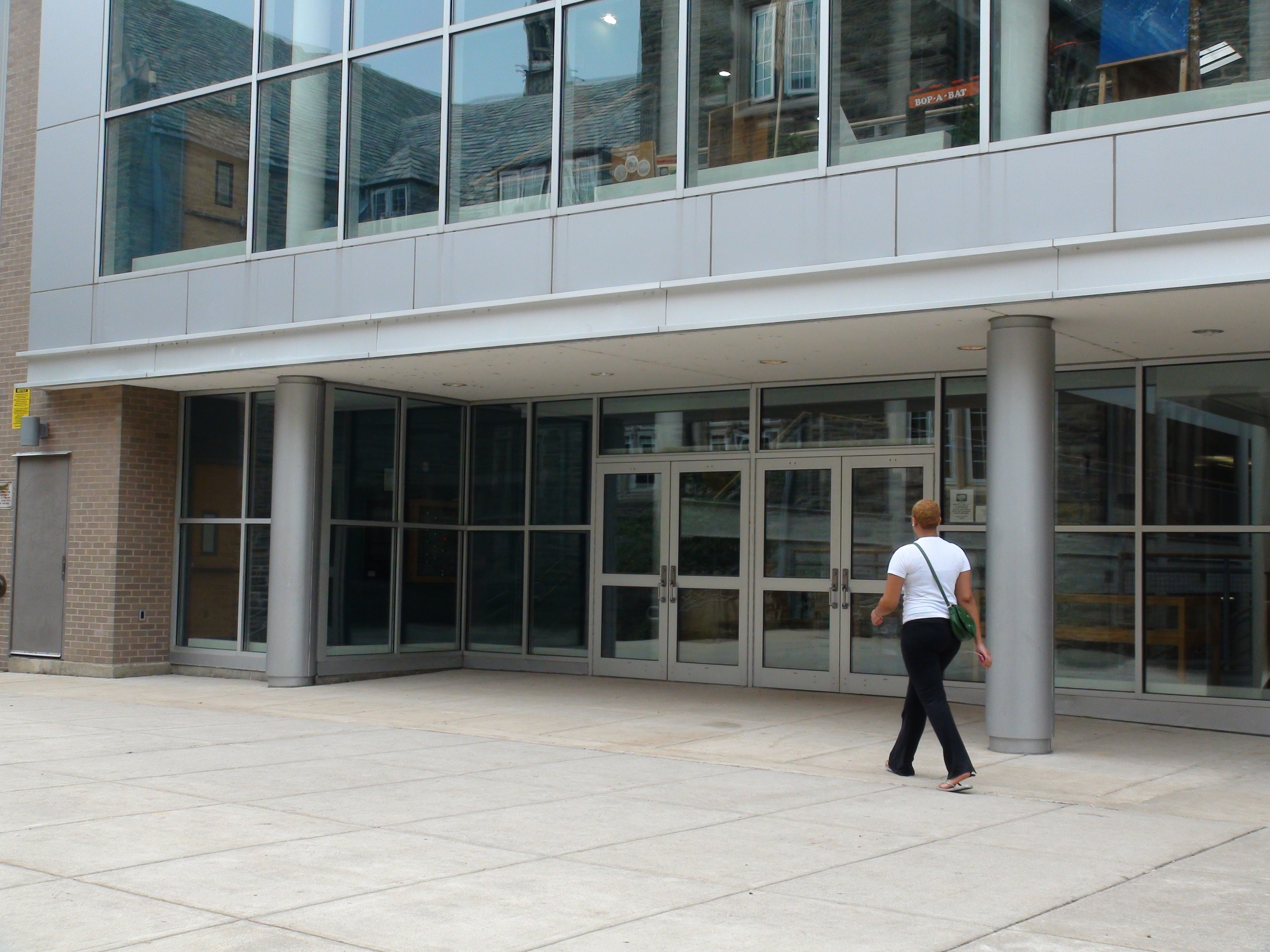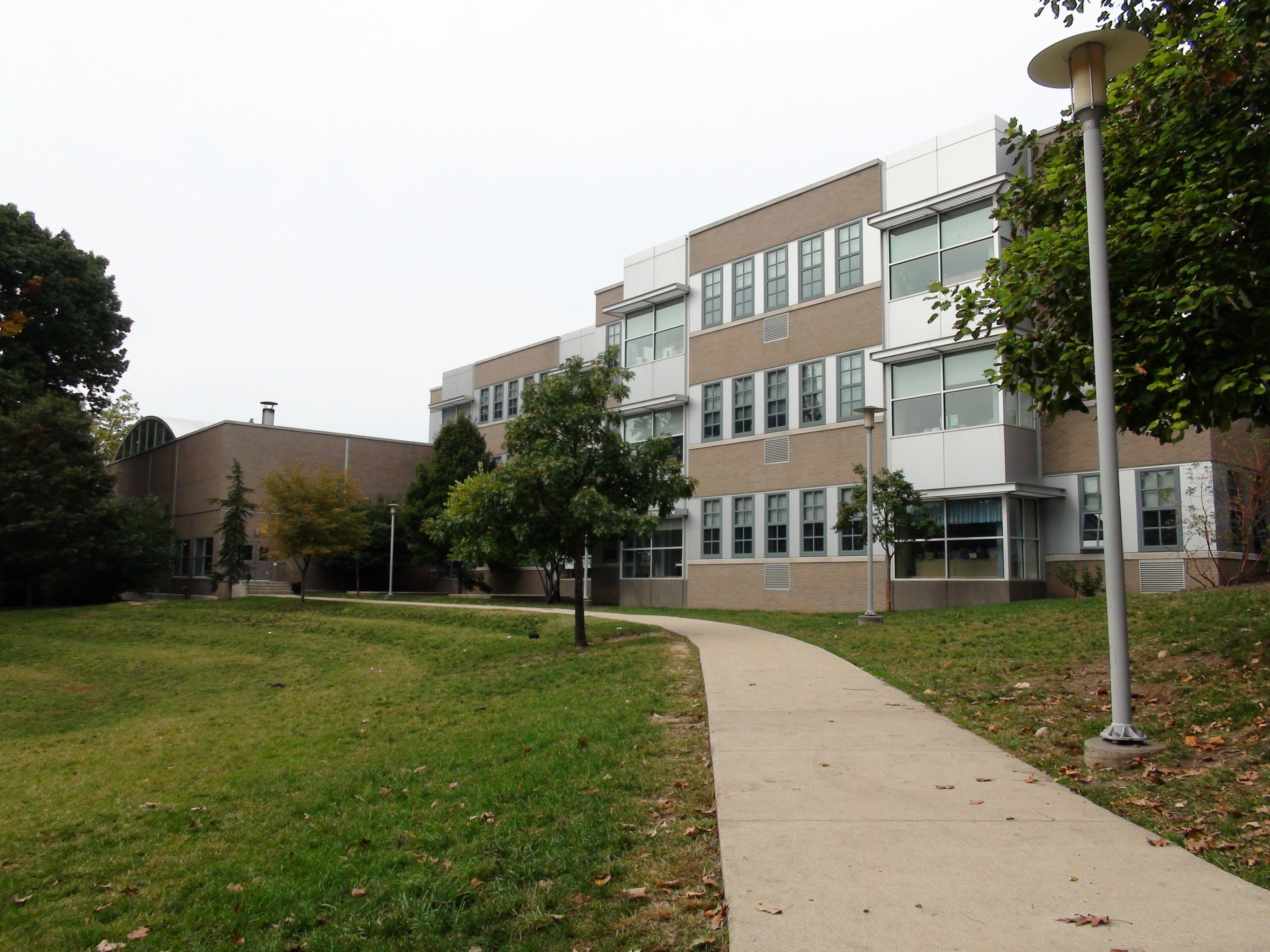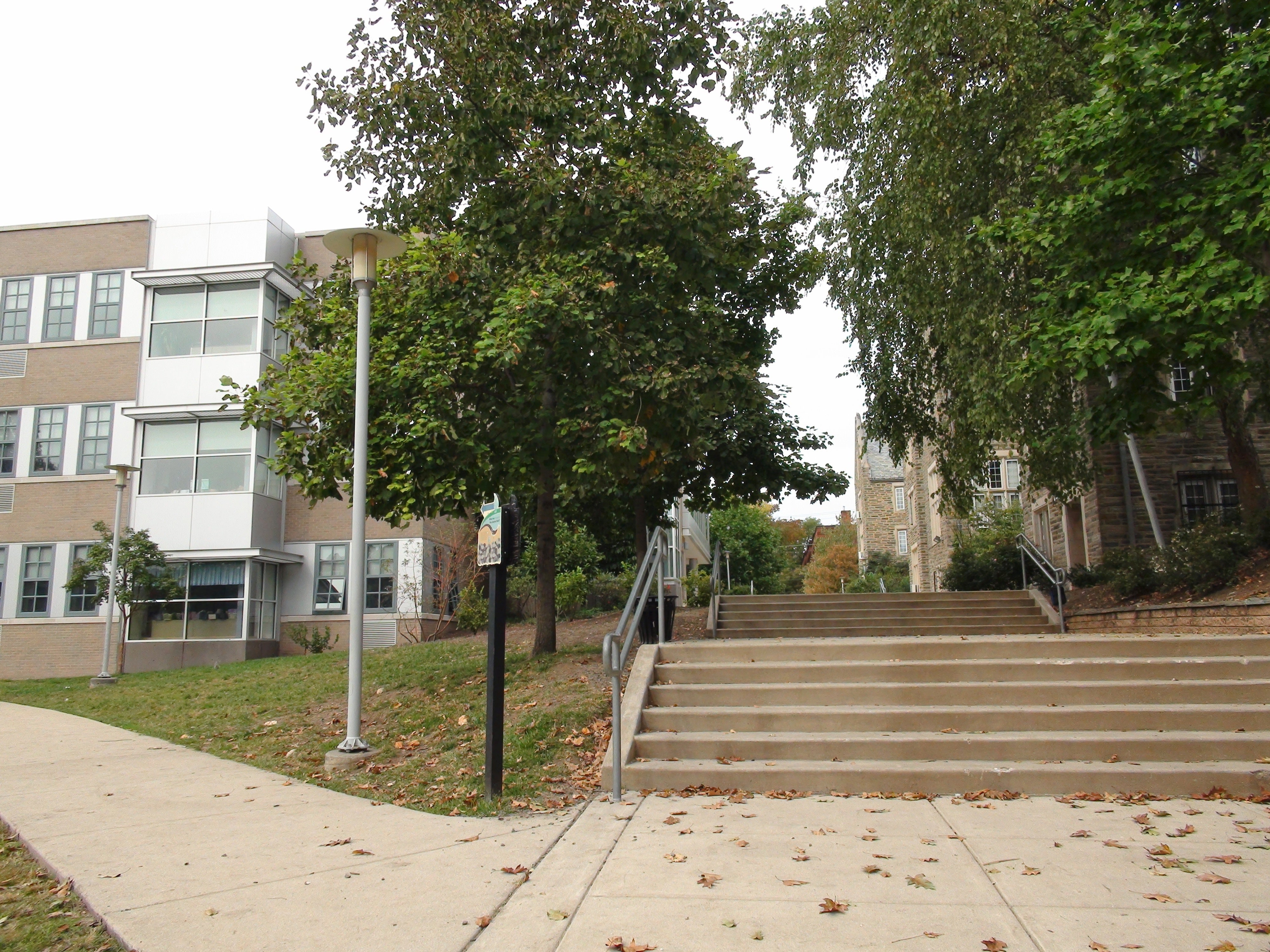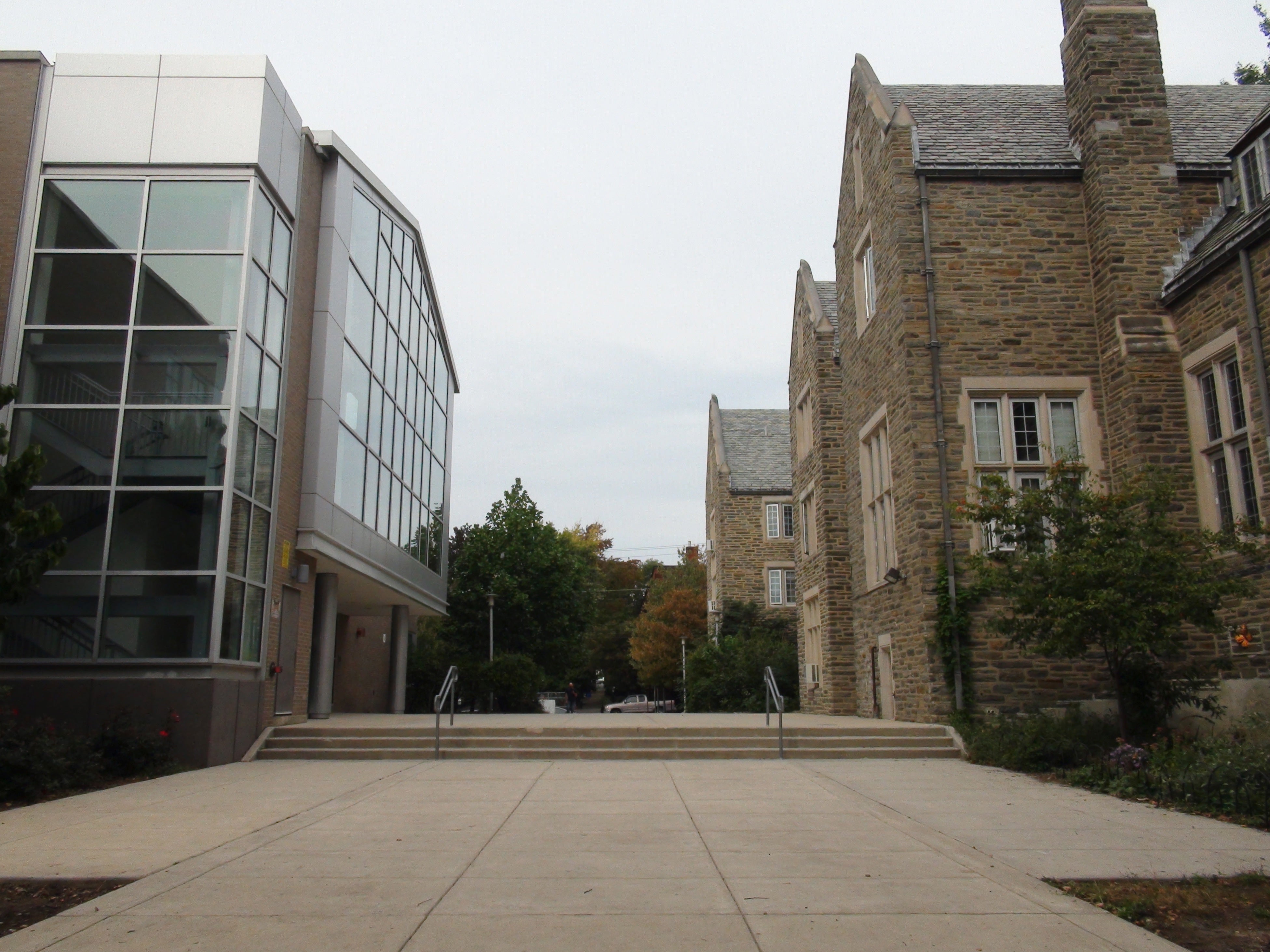University City feeling the impact school closings and consolidation threat cast
This story is the product of a reporting partnership on the facilities master plan between the Notebook and PlanPhilly.
They were only 142 words, comprising just one proposal among 84 others on the leaked Philadelphia School District’s facilities closings list published last spring by the Public School Notebook.
The gist was simple: close Alexander Wilson Elementary, move the students to Lea Elementary, and, to relieve overcrowding, consider redrawing the boundary for the University of Pennsylvania-sponsored Penn Alexander Elementary School.
They were recommendations. Nothing was final. But those 142 words were enough to sharply slow sales of single-family homes in an increasingly exclusive section of University City, re-ignite a decade-old debate about gentrification and lead some residents to question if they wanted to stay in the city at all.
Powered by the runaway success of the 10-year-old Penn Alexander School, the residential neighborhoods west of Penn are in the midst of one of the most pronounced economic and demographic shifts now occurring anywhere in Philadelphia, a fact that is dramatically underscored by newly available Census data.
The community is one of several in the city where a small but growing group of middle and upper middle class parents – many of whom are white – are hoping to stay in Philadelphia, and send their children to public schools, instead of fleeing for the suburbs or paying private school tuition as was virtually automatic in earlier years.
Some powerful people and institutions, such as the Center City District, have started to contend that improving low-performing public schools in relatively well-off and rapidly gentrifying neighborhoods – from Passyunk Square, to Fairmount, to University City – is vital for the future of Philadelphia, as it is perhaps the most effective way to keep middle and upper-middle class families in the city.
“This is not an either/or choice for the School District: it can serve families whose only choice is the public school, while simultaneously craft policies to attract families with the means for mobility, but who want to stay,” read a highly-publicized report published by the Center City District last month.
Full disclosure: my family is one of those that could leave, but wants to stay. My wife and I moved from Center City to West Philadelphia and bought a home just outside the coveted Penn Alexander enrollment zone in 2006. We have a two-year-old son who we’d planned to enroll in public school. Now, we’re not so sure.
Uncertainty and opportunity
The talk of closings and mergers and new catchments has sown confusion and threatened to blunt not just Penn Alexander’s impact, but also nascent efforts to make low-performing West Philadelphia schools like Lea Elementary into appealing options for parents with the financial freedom to send their children elsewhere.
At the same time, the uncertainty over the future of some facilities and churn in the school district’s leadership may have opened a window for stronger and more formal ties between West Philadelphia’s public schools and its powerful universities.
“My wish would be that Penn, Drexel, and the University of the Sciences come together and say; ‘we’ve had some pretty remarkable success in improving the fate of the communities around us, and if we’re really committed to the urban world, we’re going to have to reach further,’” said Penn Professor James H. Lytle, who coordinates the university’s relationship with the school district. “Now is kind of an ideal time for the three universities in the University City area to collaborate in working with the whole set of schools.”
The disruption in West Philadelphia’s elementary schools showcases what awaits communities across the city, as the School District of Philadelphia enacts its Facilities Master Plan: a long-in-the-works rightsizing of district properties that will likely lead to dozens of school closings, mergers, and a host of other changes that seem certain to have major impacts on both the city’s physical landscape and the daily lives of many residents.
District officials say they will present specific recommendations to the School Reform Commission and the public at large by the end of the month or early November. Schools won’t start closing until 2012 at the earliest, and the district does not anticipate finishing its work – which means eliminating 34,000 empty classroom seats – until 2014.
Meanwhile, the nervous parents of University City feel as though they’re being kept in the dark. They want a process that gives them meaningful input into what happens to their community’s schools. At minimum, they say, they need some definitive answers.
“I think there’s a lot of tension. People have a lot of questions. You could almost call it hysteria,” said University resident Jon Gabrielle Hermann, the former executive director of Campus Philly, a non-profit that encourages college students to connect with the city of Philadelphia. “Can I send my kid to Penn Alexander? What if I can’t? Does that mean charter schools? Lea? Do I need to start researching the suburbs?”
The Penn Alexander Effect
To understand how something as arcane as a school facilities plan could create hysteria, you have to go back to 2001, when the district opened the Penn Alexander School at 43d and Locust in partnership with the University of Pennsylvania.
It was hardly the first public school to have a formal relationship with a local university. But from the beginning, Penn Alexander was different. It was built on Penn property. Penn helped select its principal, and supplies student teachers and training for the school faculty. Each year, Penn contributes $1,330 per student. And, critically, the school was constructed not just to educate local children, but also to serve as a tool for urban renewal.
By the mid-1990s, Penn had realized that its fate was tied to that of West Philadelphia, and the university was spending a fortune in its effort to make the local community safe and attractive enough so that more students, professors and staff would feel comfortable living close to campus.
But for all the investments – a business district, a huge security force, extensive capital development – the lack of a strong local public school was a deal breaker for a lot of Penn-affiliated parents with young children.
The two schools that then served the handsome residential neighborhoods west of Penn were Wilson and Lea. Some locals wanted the university to put its efforts into improving those schools, which were low-performing institutions where the vast majority of students were economically disadvantaged African Americans.
Instead, the university and school district chose to build Penn Alexander from the ground up, designing it to be the sort of public school Penn professors would happily send their children to. The school’s enrollment borders – or catchment – were plucked from the areas formerly served by Lea and Wilson. As it happened, the catchment included many blocks that were already far whiter and wealthier than the rest of West Philadelphia.
In September, 2001, the school opened to kindergartners and first graders. By 2004, it was serving grades K-8. Within two years, Penn Alexander students were testing proficient on state exams at a rate twice that of the district average, and out of state delegations were stopping by to take notes on building a successful urban school.
By then the great Penn Alexander property rush was well underway. Together, Penn and the district had created the most rare and desirable amenity in the Philadelphia real estate market: a high quality public school. Philadelphians with means and children (or even prospective children) began snapping up homes in the catchment at a furious pace, including many with no Penn affiliation whatsoever.
Realtors took to marketing the catchment on for sale signs and websites (such as www.catchmentrealestate.com). Soon, catchment home buyers were paying a Penn Alexander Premium estimated by realtors to be $50,000 to $100,000 above and beyond the market price for an identical home located just outside the school zone.
Indeed, between 1998 and 2011, property values of single family homes in the school’s catchment increased by a staggering 211 percent. That appreciation rate was three times the city average, and more than double the increase of Center City and the University City neighborhoods located outside the catchment.
And then, abruptly, the boom came to a screeching halt.
A community disrupted
On May 11, the West Philly Local reported that Penn Alexander’s lower grades were full-to-bursting with students, and that the school district had decided it would have to start turning away students, including some who live in the catchment. A month and a half later, the Notebook published the district’s leaked school facilities plan, which advised officials to “consider redrawing boundaries for Penn Alexander School.”
The news spread quickly across the neighborhood like the worst sort of gossip, by text message, at the Clark Park playground and over community list-serves. Some celebrated the popping of the “Penn Alexander bubble,” but most considered the news a terrible development.
“The Penn Alexander School over the last 10 years has been a powerful engine for neighborhood renewal,” said Mark Wagenveld, president of the Spruce Hill Civic Association (full disclosure: Wagenveld was my editor 10 years ago). “With the enrollment cap, suddenly there’s a gnawing feeling that attendance at PAS is not guaranteed, and that’s going to set us back.”
Veteran real estate agent Melani Lamond, who lives just within the catchment, said that only six properties had entered into an agreement of sale since the news broke in May that enrollment was capped, well below the typical pace even in a bad national real estate market. Well-priced, attractive homes within the catchment are languishing on the market or being taken off the listings by their owners, a scenario which Lamond described as highly unusual.
She chalks up the chill in the market to the sense of uncertainty about enrollment, and indeed that might be what most bothers parents in the catchment as well.
“First and foremost we would like the process of registration to be as transparent as possible. People do not know what the scope of the problem is, who is going to get priority for slots,” said Michael Shashaty, a leader of a new parent organization in the catchment called Advocates for Great Elementary Education, or AGREE.
AGREE has mounted a petition drive and letter-writing campaign urging the school, the district and Penn to find room for all students living in the catchment to enroll at Penn Alexander. A good place to start, members say, would be with a little more information.
“I think if there were enhanced communication between the school and the parents and neighborhood, and potentially with some kind of written policy people could refer to, that would be the first step to diminishing the stress level of the community and then it would give us a starting point from which we could say ‘is there a problem?’ And if there is, ‘how do we fix the problem?’” Shashaty said.
AGREE has met with a number of Penn officials, and while the university has been short on answers it appears to be sensitive to concerns of parents within the catchment. There are signs the university is working on some sort of fix.
But Penn does not want to be seen as dictating enrollment policy to the district, particularly not at a time when – with a new superintendent and a remade School Reform Commission – there may be an opportunity for the university to become more deeply involved in West Philadelphia schools beyond Penn Alexander, such as Lea and Wilson if it remains open.
Certainly there is no shortage of senior district leaders with Penn connections. Incoming SRC Chair Pedro Ramos was chief of staff to former Penn President Judith Rodin, who pushed for Penn Alexander. Fellow SRC newcomer Wendell Pritchett, a West Philadelphia resident, is a former Penn law professor, as Mayor Nutter’s newest appointed, novelist Lorene Cary, is a Penn creative writing lecturer. Interim Superintendent Leroy Nunery is a former Penn vice president, as was district CFO Michael Masch.
“Penn created this situation to some degree, because it created Penn Alexander. That’s had implications the university probably hadn’t thought all the way through, and the school has been dramatically more successful than anyone had imagined,” said Lytle, the Penn school district coordinator. “So now what?”
Thus far, the school district has been short on answers.
Penn Alexander’s principal and the assistant superintendent that oversees the school said through a district spokesperson they were too busy to be interviewed. In a statement, district spokesman Fernando Gallard said “currently there are no plans to amend the enrollment guidelines.”
For many within the catchment, though, the status quo is unacceptable. Currently, enrollment is available to local residents on a first come, first served basis. That policy has already led to the spectacle of parents camping out overnight next to the school (in 9 degree weather this past January) to secure a spot in the limited-space kindergarten classrooms. Until last spring, those that missed out on kindergarten still were more or less sure to get in for first grade. The fear now is that, with that assurance gone, the line will form far earlier.
But it is not clear what the alternatives are. AGREE opposes both a lottery and a redrawing of the catchment. Some parents have suggested trailers or a new wing. Others, larger class sizes.
The district’s statement addressed none of that. It did say, though, that the district would be evaluating “equitable access to educational options” as part of its Facilities Master Plan.
“The District will be reviewing catchment areas, demographics, projected demand and academic quality as part of the planning effort,” the statement said. “We believe that the District’s ongoing relationship with Penn can help in exploring a range of options for supporting schools in West Philadelphia, and addressing equitable access.”
A quality public education, but for who?
Though it is not entirely clear what the district means by “addressing equitable access,” there is little disputing the fact that Penn Alexander has, over time, come to serve more and more white and Asian students and fewer African American ones.
A PlanPhilly analysis of 2000 and 2010 Census data – which looked at data down to the block level, enabling a close match with the catchment area – found that the African American population within the Penn Alexander catchment declined by 52 percent in just 10 years, even as the white and Asian populations increased by 27 percent and 56 percent, respectively. (Note: the Census has not released block or tract level data for income or other non-racial indicators of community change).
Middle-class African Americans have been leaving Philadelphia in large numbers in recent years for a variety of reasons. But the decline in the black population within the catchment is so sharp that it is hard not to conclude that higher property values, fueled in large part by Penn Alexander, have displaced some lower-income African Americans from the catchment.
The figures are unlikely to surprise longtime African American residents, some of whom see the high-performing elementary school as part of a highly coordinated Penn strategy to exercise its influence over large sections of West Philadelphia, sometimes at the expense of black residents.
“Penn’s plan has worked brilliantly. They created PAS for the purpose of educating professors’ children, and it’s done that. The problem is it displaced a lot of people, people who didn’t own homes or couldn’t pay the higher taxes,” said Rev. Charles McNeil, a pastor at Transfiguration Baptist Church in Mantua and a resident of the 400 block of S. 48th Street, just outside the catchment.
The Census figures tell another story as well: the Penn Alexander enrollment problem may not be as huge as many catchment parents fear. Despite anecdotal accounts of an epic Penn Alexander-fueled baby boom, there were, in fact, slightly fewer children 17-and under in the catchment in 2009 then there were when the last Census was taken in 1999: 1,306 in 1999 compared to 1,211 now. Nor is there a glut of younger children. The Census counted 512 children under five years old in 1999, compared to 489 in 2009.
And according to the school district, of the 658 K-8 district students who live in the catchment, 577 are already at Penn Alexander.
What has changed dramatically is the racial composition of children within the catchment. As of 2009, there were 101 percent more white children in the Penn Alexander zone then there were 10 years earlier, and 61 percent fewer African American children. The figures are particularly stark amongst the youngest children, suggesting that over time Penn Alexander’s student body will grow increasingly white and Asian as older African American students matriculate.
An alternative to Penn Alexander
That profound demographic shift was no doubt on the minds of the leaders of the West Philly Coalition for Neighborhood Schools when they wrote the organization’s mission statement: “We are aware of well-meaning but ultimately paternalistic efforts to ‘fix’ or ‘improve’ neighborhood schools – that is, to remake them into a middle-class vision of ‘good schools’ and to fill them with middle class kids. We want to be very explicit about the fact that that is NOT the intention of WPCNS.”
Disclaimers aside, WPCNS is plainly working hard to “improve” Henry C. Lea, which sits across the street from the old West Philadelphia High building. The group’s members have secured pro bono design consultancy for the school from the Community Design Collaborative, acquired air conditioners for the kindergarten classrooms, collected supply and book drives and so on.
The school could use all the help it can get. Lea, at Locust and 47th, is just four blocks due west of Penn Alexander, but the academic, demographic and economic gulf between the neighboring schools is vast.
Where Penn Alexander’s student body is a diverse mix of about one third African American students, one third white students and a wide array of other ethnic groups comprising the other third, Lea is 87 percent African American. Fully 90 percent of Lea students are classified by the district as economically disadvantaged, compared to 47 percent at Penn Alexander. And PAS students are more than twice as likely as Lea students to pass state proficiency exams.
Which makes it all the more unusual that the 200-plus members of WPCNS, many of whom are middle or even upper middle class, are so intent on getting involved in Lea and maybe, just maybe, sending their own children there.
That’s right. As of now, few if any WPCNS members have children enrolled at Lea. Some have children a year or two away from kindergarten. Others, like WPCNS Chair Amara Rockar, do not yet have kids.
“I’m a very anxious person,” Rockar said, when asked why she was working to improve a neighborhood school before she had children to send there.
Rockar and other WPCNS members say they’ve been inspired by the work of Jacqueline Edelberg, the author of How to Walk to School: A Blueprint for a Neighborhood School Renaissance. The book tells the story of how Edelberg, a Chicago mother, helped convince her community to take a “leap of faith” and commit their time and, eventually, their children, to a long struggling neighborhood school.
The neighborhood Lea draws from has changed considerably in the last 10 years, if not quite so dramatically as Penn Alexander’s. The African American population in Lea’s catchment has declined by 28 percent, and the white population has swelled by 68 percent.
Much of that is attributable to newcomers like myself and my wife: people who could not afford to live in the catchment, but were drawn to the neighborhood’s handsome homes, tree-lined streets, and a distinctive community feel unlike any other in Philadelphia, born in large part from the neighborhood’s really remarkable diversity . When we moved here in 2006, we were naïve enough to think perhaps the PAS catchment would expand to include our house. When it became clear that wouldn’t happen, we began planning a move into the Penn Alexander catchment. Until recently, we were barely aware of Lea, much less considered it an option for our son.
The trouble with that, as Rockar pointed out in one of many online public discussions on Penn Alexander overcrowding in recent months, is that pretty much all parents “with the funds, savvy and/or connections” consider only a small handful of public elementary schools across the city acceptable for their children.
“For the continued growth of our city and strength of our neighborhood, this is clearly unsustainable,” Rockar wrote. She then invited those on the list serve “terrified” about the lack of public school options to volunteer for a morning in a Lea kindergarten room.
Lea’s capable principal, Dr. Lisa Bell-Chiles, welcomes the new-found interest in the school, though she seems slightly bemused by it all.
“I’m meeting a lot of new parents, who are thinking of enrolling their children. It’s interesting. Some of them have children that are not ready for kindergarten yet, and maybe they won’t be for two or three years, but they’re still coming in,” Bell-Chiles said. “They’re quite welcome. I think some were surprised by what they saw here. We are an empowerment school, but we push our children to achieve, the curriculum is not dumbed down.”
Seeing Lea’s kindergarten classroom in person was enough to convince David Hincher and his wife Mara that they could send their daughter to Lea in two years time and be confident she’d receive a good education. It was not a decision they reached easily.
“Our household become kind of a warzone on the issue of education,” said David Hincher, an architect at Kieran Timberlake, as his daughter played with other WPCNS kids at a local park during one of the group’s weekly meetings, which double as playdates.
He values public education as an essential civic building block, and was adamant that their children go to their neighborhood public school. His wife, Mara, was not willing to compromise on the quality of her daughter’s education to meet some sort of high-minded ideal. After seeing Lea for themselves, they think they won’t have to.
Still, it’s unclear how many WPCNS parents will follow through and actually enroll their children in the school. Much, it seems, will hinge on how many parents are willing to take the initial “leap of faith.” Too few, and the entire effort could evaporate overnight.
The questions about Wilson, a K-6 school, and its potential closure only add to the uncertainty. While Wilson has an academic record and students with economic problems that roughly match those at Lea, Wilson lacks Lea’s active Home and School Association and increasingly robust community engagement. Some WPNCS parents fear combining the two schools would only further entrench Lea’s poverty and poor student performance.
But Bell-Chiles says Lea has the space for Wilson’s 231 students, and PlanPhilly’s analysis of the Census data confirms that the district – which must scale back its underused facilities to save on operating costs – has good reason to target West Philadelphia. The 17 and under population in the Lea and Wilson catchments is down by 36 percent over the past 10 years. The falloff is particularly sharp in the Wilson area: 46 percent.
Still, West Philadelphia education advocates, including those at Penn, hope Wilson doesn’t close.
“I think it’d be a mistake to close Wilson. It could be part of the answer here,” Lytle said, referring to the overcrowding at Penn Alexander and the ever-louder middle and upper middle class clamor for quality public education in West Philadelphia.
Whether or not that happens depends partly on what the district decides to do with its facilities. Perhaps more important, Lytle said, is the sustained interest and activism of the community.
“Parents can help drive this agenda,” Lytle said. “I think there’s the prospect for some kind of responsiveness here from the university and the district.”
Contact the reporter at pkerkstra@planphilly.com or follow him on Twitter.
WHYY is your source for fact-based, in-depth journalism and information. As a nonprofit organization, we rely on financial support from readers like you. Please give today.



